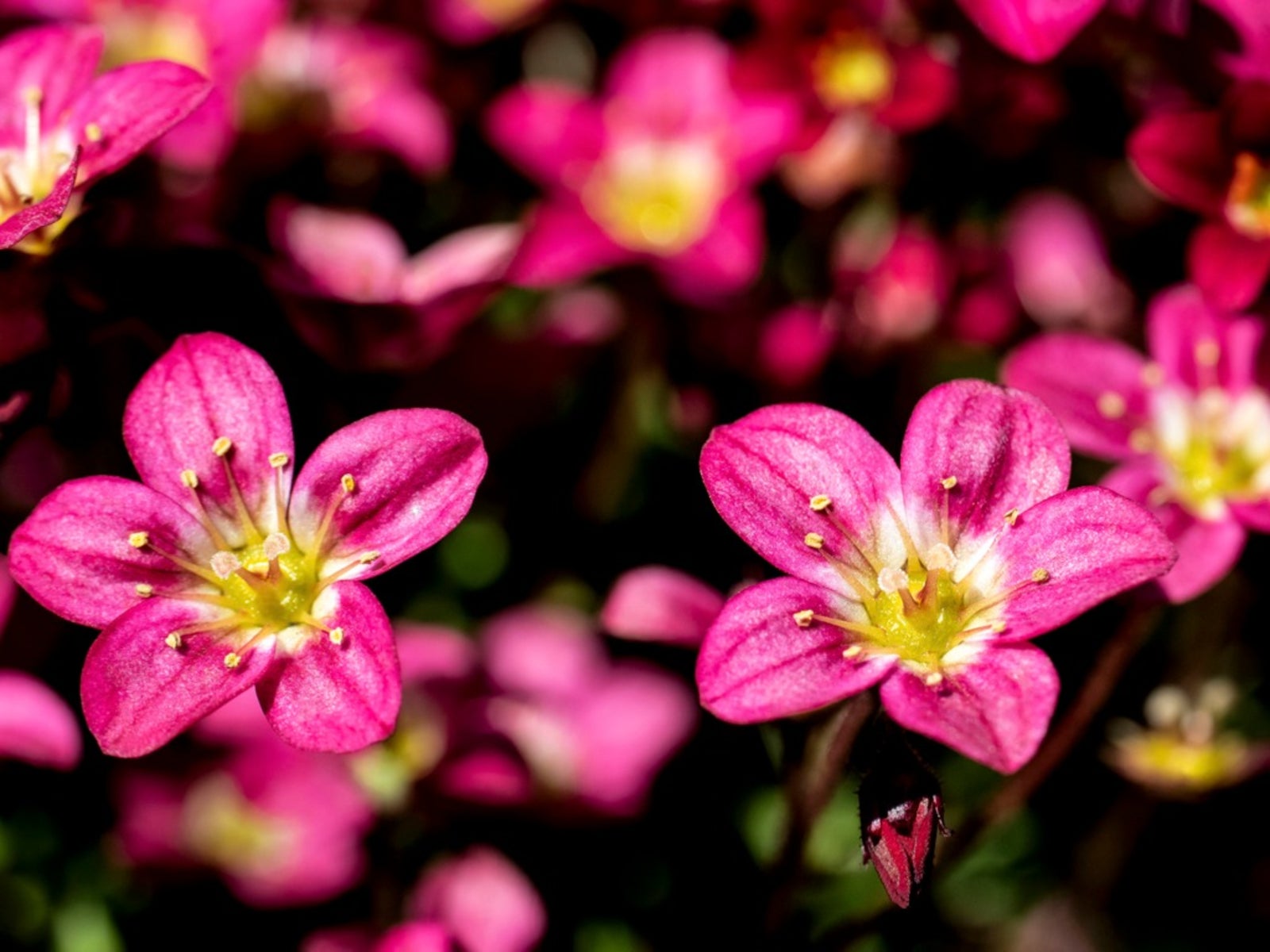Saxifraga Plant Care - Tips For Growing Rockfoil Flowers


Saxifraga is a genus of plants found almost everywhere on earth. Typically, the plants form mounds or creeping mats and produce tiny flowers. There are approximately 480 species of the plant, and plant enthusiasts and breeders are introducing more each year. A very common and easy-to-grow variety is rockfoil. Information on how to grow rockfoil plants will allow you an easy entry into this diverse and attractive group of plants.
Rockfoil Saxifraga Information
A commonplace form of Saxifraga is mossy rockfoil. There are many types of rockfoil, but mossy rockfoil is readily available in nurseries and garden centers. The mossy varieties are in the section of Saxifraga called hypnoides.
The plant is an excellent groundcover, forming a thick, tenacious carpet over rocks and under trees. Rockfoil produces its thickest and most lush foliage in spring. The bright green, crinkly leaves pack tightly together and carpet rocks, pavers, and lightly shaded nooks. In spring, tiny, cupped flowers appear on slender stalks held above the body of the plant.
The wiry stalks are tinged pink to purple and support blooms of salmon, pink, purple, white, and other hues. The rockfoil flowers last into the early part of summer. Once the flowers die back, the plant is exposed to drying air and sun without their shading protection. This often causes the plant to die in the center. Fill in the center with a light dusting of sandy grit to help the plant hold moisture and prevent core mortality.
This is important rockfoil Saxifraga information to preserve the beauty of your plant. The perennial plant needs moist shade and is hardy in USDA plant hardiness zones 5 to 7 in temperate regions. Growing rockfoil requires cool sites which mimic its alpine native ranges.
How to Grow Rockfoil Plants
Mossy rockfoil has no special needs, provided you give it a location with some shelter from wind and hot sun. The plants require moist soil, especially in spring when they are growing the most. You can plant this Saxifraga from seed but for faster plants, divide a mature clump.
Seeds require cold stratification for germination and can take two to three years to bloom. Growing rockfoil from divisions helps prevent the center die out and gives you more of these alpine plants for your garden. This species needs a moist, rich loam for best performance. Mix in a little compost with existing soil at planting time.
Gardening tips, videos, info and more delivered right to your inbox!
Sign up for the Gardening Know How newsletter today and receive a free copy of our e-book "How to Grow Delicious Tomatoes".
Saxifraga Plant Care
Mulch around the plants to conserve moisture and help prevent weeds from growing up into the center of the plant as it spreads. Water twice per week in summer. In colder zones, mulch over the plant lightly to protect the roots from freezes but pull away the mulch in early spring. This allows the new growth to burst out without having to push through the layer of mulch.
Mossy rockfoil needs no pruning and has no staking or manual cultivation needs. As with any plant, watch for pests and diseases with Saxifraga care and maintenance. It is prey to several species of insects and is prone to rots and rust. Combat these by avoiding overhead watering when the plant can't dry out quickly and with a fungicide or baking soda spray.

Bonnie Grant is a professional landscaper with a Certification in Urban Gardening. She has been gardening and writing for 15 years. A former professional chef, she has a passion for edible landscaping.
-
 Zinnias On Repeat: 10 Glorious Cut-And-Come-Again Varieties For Endless Summer Bouquets
Zinnias On Repeat: 10 Glorious Cut-And-Come-Again Varieties For Endless Summer BouquetsThese zinnia varieties keep giving all summer, making them the perfect choice for dedicated cutting gardens – or just the occasional homegrown bouquet.
By Ellen Wells
-
 Create A Romantic Garden Straight Out Of Bridgerton: Regency Era Romance In Your Garden
Create A Romantic Garden Straight Out Of Bridgerton: Regency Era Romance In Your GardenTry some romantic garden ideas straight out of Bridgerton. Flowers and gardens in the Regency era were lush and charming and you can get the same look!
By Bonnie L. Grant